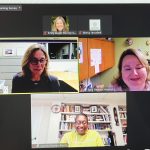When schools were shut during COVID-19, teachers dealt with a lack of student engagement during online instruction, said Michael Young, an associate professor at the University of Connecticut’s Neag School of Education who has expertise in cognition, instruction and learning technology.
Preston Green, an educational policy professor at the University of Connecticut, says there is ongoing legal debate about whether charter schools are public or private institutions.
“Courts have had a very difficult time over the years making these distinctions whether charter schools are public or private because the laws may be different depending on the issue,” Green says.
The twin events of the COVID-19 pandemic and a heightened awareness of racial inequities in the United States have further cemented the commitment of female Black school principals to their schools, according to a recent journal article published by three UConn scholars from the Neag School of Education.
Most board searches start off by trying to find someone who’s already had superintendent experience. But those preferences are not well matched to the current market, said Robert Villanova, a professor and the director of the executive leadership program at the University of Connecticut’s Neag School of Education.
The University of Connecticut’s Neag School of Education collaborated with UConn Women and Philanthropy this past Thursday to host “ELLEvate: Supporting Women in Leadership,” a panel discussing women’s experiences in leadership roles.
The panel, led by Laura Burton, department head and educational leadership professor at the Neag School, included Fany DeJesus Hannon, director of the Puerto Rican/Latin American Cultural Center (PRLACC) at UConn; and Vonetta Romeo-Rivers, director of teaching and learning for Regional School District 10 in Connecticut. Both Hannon and Romeo-Rivers are alumni of the Neag School.
But as the first Black woman on the court, Jackson would likely be more attuned to issues of race and gender as reflected in school dress codes or restrictions on Black hairstyles like braids, and she might see “discrimination that maybe another justice might not,” said Preston Green, an education professor at the University of Connecticut.
This article originally found on The Conversation, is co-authored by the Neag School’s Eli Wolff, answers five questions about the International Olympic Committee (IOC) and how they respond to human rights and other issues.
Some legal scholars say that raises a new question. If a state can’t keep a private religious school out of its voucher program, can it stop a religious school from participating in its charter school program?
“Charter schools are the next frontier,” Preston Green, an education law professor at the University of Connecticut. Compared to school vouchers, “this could actually be more of a win for religious entities if they can get it.”
This spring, the Connecticut Noyce Math Teacher Leaders (MTL) Program welcomes a cohort of 20 veteran mathematics educators from across the state.
DIBELS itself doesn’t involve a lot of reading, but helps to predict how well children develop literacy skills by testing how fast and accurately they identify words, explained Rachael Gabriel, an associate professor of literacy education at the University of Connecticut.




